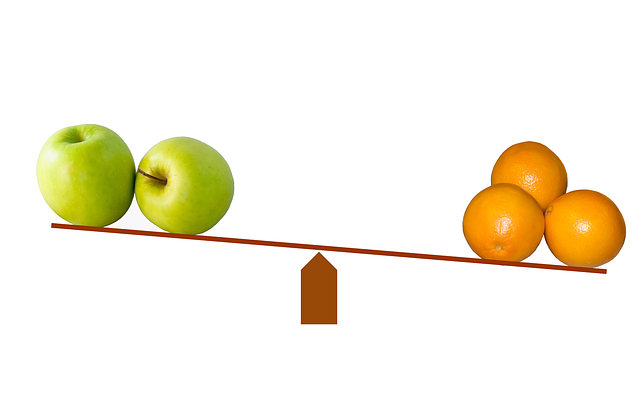This text compares purchase order (PO) financing and invoice factoring, two cash flow management strategies for businesses. PO financing advances funds based on outstanding customer POs, offering steady capital but tying accounts receivable to specific orders. Invoice factoring, on the other hand, sells invoices to a third-party factor for immediate funding, providing swift relief but shifting credit risk and potentially higher costs. Businesses should consider their cash flow needs, transaction types, and risk tolerance when deciding between these methods, as each has unique advantages and drawbacks in terms of speed, cost, and operational control.
Selecting the right funding option for your business can be a game-changer. This article delves into two popular choices: Purchase Order (PO) Financing and Invoice Factoring, helping you navigate their intricate differences and benefits.
We’ll explore how each option works, compare their pros and cons, and guide you through choosing the best fit for your business needs. From real-world case studies to SEO insights on keywords like PO financing vs invoice factoring, this comprehensive guide ensures you make an informed decision.
- Understanding Purchase Order (PO) Financing and Invoice Factoring
- Key Differences Between PO Financing and Factoring
- Comparing the Pros and Cons of PO Financing vs. Invoice Factoring
- When to Choose PO Financing or Invoice Factoring
- Real-World Applications: Case Studies in PO Financing and Factoring
Understanding Purchase Order (PO) Financing and Invoice Factoring

Purchase Order (PO) financing and Invoice Factoring are two distinct methods for businesses to manage their cash flow and working capital needs. PO financing involves securing funding by using customer purchase orders as collateral, enabling businesses to receive payments upfront from their clients. This approach provides immediate access to funds, allowing companies to cover expenses, invest in growth opportunities, or meet operational demands without waiting for the traditional invoice payment cycle.
On the other hand, Invoice Factoring is a process where businesses sell their outstanding invoices (or accounts receivable) to a third-party factor at a discount. The factor takes on the responsibility of collecting these invoices from the customers and assumes the credit risk. This method offers immediate cash flow relief, as businesses receive a percentage of the invoice value upfront, often with faster turnaround times compared to traditional banking loans. Comparing PO financing and factoring reveals differences in collateral requirements, payment timing, and risk allocation, making each option more suitable for specific business scenarios.
Key Differences Between PO Financing and Factoring

When considering funding options for your business, understanding the nuances between purchase order (PO) financing and invoice factoring is crucial. These two methods offer distinct approaches to managing cash flow and each comes with its own set of benefits and drawbacks.
PO financing involves securing a loan based on outstanding purchase orders from customers. This method provides working capital by allowing you to receive funds before the invoice due date, but it ties your accounts receivable to existing orders and may limit flexibility. Invoice factoring, in contrast, involves selling invoices (or accounts receivable) to a third-party factor for immediate funding. This offers immediate cash flow, decoupling it from specific purchase orders, but it typically involves higher fees compared to PO financing. Comparing these options, business owners should weigh the speed and flexibility of factoring against the more conservative approach of PO financing, ultimately choosing the method that best aligns with their cash flow needs and risk tolerance.
Comparing the Pros and Cons of PO Financing vs. Invoice Factoring

When deciding between purchase order (PO) financing and invoice factoring, understanding their distinct pros and cons is key. PO financing offers a more direct approach where a lender provides funding based on outstanding POs from customers, typically with a discount on future purchase orders. This method streamlines cash flow by advancing funds before the invoice becomes due, benefiting businesses with consistent PO workflows.
On the other hand, invoice factoring involves selling invoices to a third-party factor for immediate cash. While this provides quick access to funds, it may come with higher costs and can be less suitable for businesses with variable sales cycles or those seeking to maintain direct control over their accounts receivable. Comparing these options, business owners should weigh the trade-offs between funding speed, cost efficiency, and operational autonomy to make an informed choice tailored to their financial needs.
When to Choose PO Financing or Invoice Factoring

When deciding between PO financing or invoice factoring, businesses should consider their cash flow needs and the nature of their transactions. PO financing is ideal for companies that frequently deal with purchase orders from customers and have consistent, recurring sales cycles. It allows businesses to access working capital by funding these pending invoices, providing a steady cash flow without immediate repayment. This option aligns well with B2B relationships where payment terms are extended.
On the other hand, invoice factoring suits businesses that require rapid access to funds for urgent financial needs or to cover unexpected expenses. Factoring companies purchase invoices at a discount, providing immediate funding. While this offers faster cash flow, it may not be suitable for long-term financing as the discounts can impact overall profitability. Comparing PO financing and factoring, businesses should evaluate their ability to manage payment terms with each approach and choose the one that best supports their financial goals and operational needs.
Real-World Applications: Case Studies in PO Financing and Factoring

In the realm of business finance, both Purchase Order (PO) financing and Invoice Factoring have proven to be valuable tools with real-world applications that demonstrate their merits in different scenarios. PO financing is particularly effective for businesses dealing with long sales cycles or those requiring significant upfront investments, offering a way to bridge the gap between fulfilling orders and receiving payments from customers. For instance, a manufacturer specializing in custom equipment orders might use PO financing to cover the cost of materials and labor before delivering the final product.
On the other hand, Invoice Factoring is often preferred by companies seeking immediate cash flow for their outstanding invoices. This method enables businesses to sell their accounts receivable at a discount to factoring companies, providing quick access to capital. A retail store might opt for factoring when facing tight cash flow due to delayed payments from distributors or customers, allowing them to maintain operations and cover immediate expenses. Comparing PO financing and factoring reveals distinct differences; PO financing provides long-term funding with potential interest rates but ties business finances to future sales, while factoring offers quicker access to funds at a fixed fee, unrelated to the sale of goods or services.






